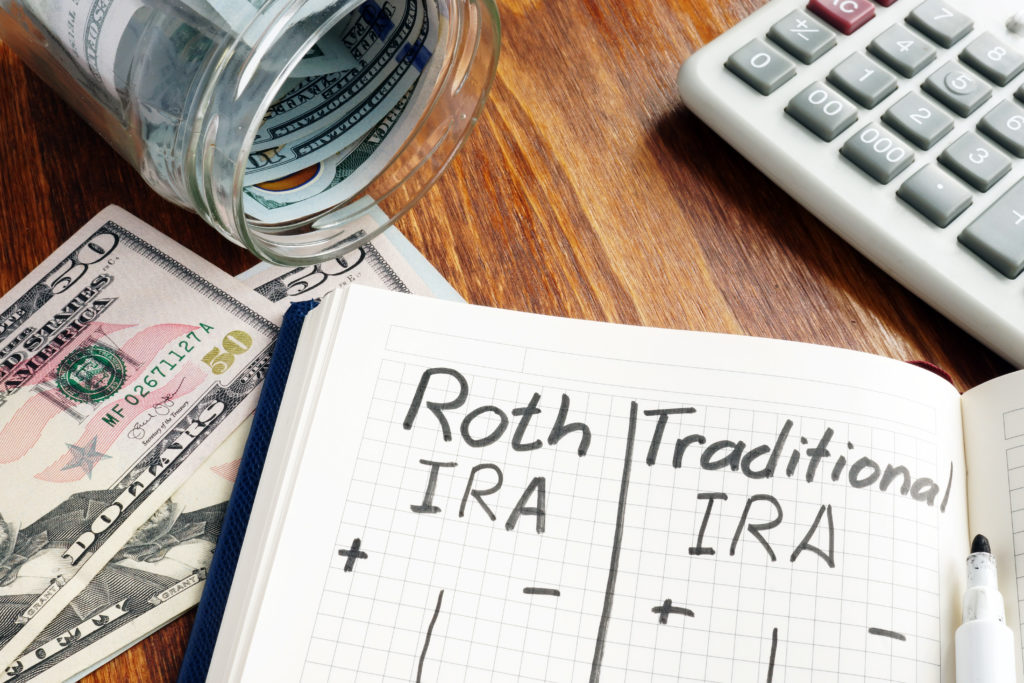
A Roth IRA is a double-tax-advantaged retirement savings account that offers tax-free earnings growth and tax-free distributions. Given the limited opportunities for these tax advantages, opening a Roth IRA is a great way to become financially independent by retirement.
So let’s uncover how this powerful investment option works:
What Is a Roth IRA?
A Roth Individual Retirement Account (IRA) is a retirement savings account into which eligible individuals can contribute post-tax dollars. Although account holders can’t deduct their contributions from their taxable incomes, they generally pay no taxes on the growth of contributions or on earnings before retirement, or on qualified distributions from the IRA after retirement.
The account is particularly attractive to those who are ineligible for an employer-sponsored 401(k) plan (or a plan offering a matching contribution), or those who are able to save more for retirement than the 401(k) plan limit allows. There’s no age at which account owners must begin to distribute money from their Roth IRA, making the account desirable for those who want to pass along wealth to their children or grandchildren.
How a Roth Works
A Roth IRA functions as a traditional IRA, except that you pay into it with post-tax dollars (money after taxes have been deducted) and you can only contribute if your modified adjusted gross income (MAGI) is less than a certain amount.
You can invest the contributions you make to a Roth IRA in assets of your choice, such as stocks, bonds, or mutual funds. The money you contribute to your Roth IRA won’t reduce your taxable income, but contributions and the earnings on those contributions grow tax-free. In fact, you don’t even have to report the earnings to the IRS.
You don’t pay tax on distributions that are “qualified,” even in retirement when you first tap your Roth IRA for income. Qualified distributions are those you take after you reach age 59½ and at least five years after the taxable year when you first contributed to the Roth IRA. Non-qualified distributions can be partially taxed, and, if taken before the age of 59½, you might pay an extra 10% in penalties on the distribution.
For example, let’s assume that Matt is 35 years old when he opens a Roth. He’s very diligent and consistently contributes $6,000 in after-tax dollars annually, which is then invested with an average annual return of 6%. Matt cannot deduct that $6,000 from her yearly taxable income, but his account will be worth $474,349 in 30 years, when he’s 65! He won’t lose any of that to taxes as long as he takes distributions from the Roth IRA after the age of 59½. His take-home savings will be the full $474,349. Wow! That folks is what makes the Roth such a potent investment option.
How Much Can I Contribute?
Your maximum contribution to the account is the lesser of your taxable compensation for the year or $6,000, or $7,000 if you’re 50 or older, for the 2019, 2020, and 2021 tax years. Taxable compensation includes wages, salaries, and net self-employment earnings, but it excludes interest or dividends.
You don’t have to make the entire contribution at once—you can make many smaller contributions, as long as the total amount contributed doesn’t exceed the limit for the year. You can even contribute to both a traditional IRA and a Roth IRA as long as the combined amount doesn’t exceed the limit.
The amount you can contribute to a Roth IRA is further restricted by your modified adjusted gross income (MAGI) and your tax filing status. Roth IRA income limitations change each year. For example, single filers can make maximum Roth IRA contributions when their MAGI is less than $124,000 in the 2020 tax year, a reduced amount if their MAGI is less than $139,000, and no contribution at all with a MAGI of $139,000 or more.
Single filers can make the maximum contribution if their MAGI is less than $125,000 in 2021, a reduced contribution if their MAGI is less than $140,000, and no contribution with a MAGI of $140,000 or more.
Each Roth IRA contribution relates to a specific calendar year. You can make a contribution from January 1 of that year until the filing deadline for your tax return, which has been extended to May 17th for this year.
How Do I Get One?
At Demand Wealth, we’re always available to help you with any questions regarding IRAs and comprehensive financial plans. Simply email us at any time and meet your team here. If you want a more personal touch than our numerous free planning tools, consider working directly with one of our highly experienced Financial Planners.
CUSTOM PORTFOLIOS
There’s no such thing as a “one-size-fits-all” portfolio. That’s why each investment strategy is tailored to your specific needs, interests, and what you value most. Whatever your interests, goals and/or beliefs, we’ll help you invest accordingly in the future that you want to have—without compromise.
LOW COST
With a low flat rate, we provide personalized financial portfolio management services that align with your values. We’re results oriented, which is why we’ve designed our pricing structure so that when you do better, we do better. At Demand Wealth, we go above and beyond for our clients, with research-backed active investment management that takes the guesswork out of securing your financial future.
Knowing where to start can be difficult and confusing! We are here to guide you onto the correct path for your investing future. Click here to open an account or to learn more, schedule a zoom with one our advisors today.
This report is a publication of Demand Wealth. Information presented is believed to be factual and up-to-date, but we do not guarantee its accuracy and it should not be regarded as a complete analysis of the subjects discussed. All expressions of opinion reflect the judgment of the author as of the date of publication and are subject to change.
